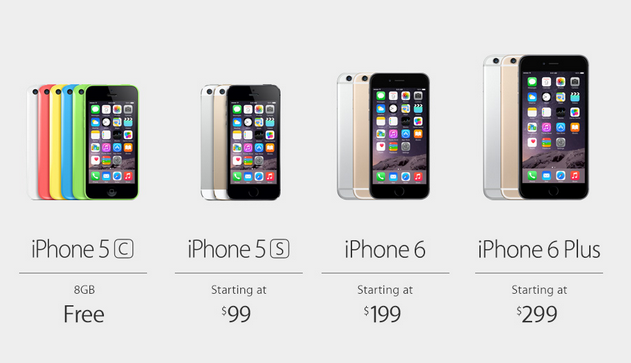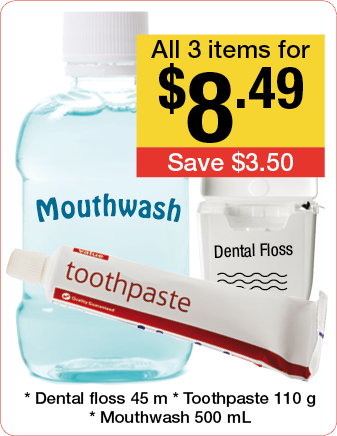
Psychological Pricing Strategy For Marketers With Magic Numbers
As an entrepreneur or marketer, you are well aware of pricing and its overall impact on sales.
A common mistake that happened by many of the marketers is forgetting about customers behavior towards pricing. Yes, people are more likely to make a decision depending on behavior and emotions.
If you only think about production cost and current market trends, you may fail to attract your desired group of customers. With today’s well-informed and self-oriented customers, rational pricing strategy doesn’t work so well.
You may listen to the term psychological pricing strategy. According to experts' opinion- it's better than rational or traditional pricing practices. But is it perfect or good enough for all sorts of products or services?
If yes, how would you apply it in a proper way? If not, what should be your ultimate pricing strategy?
In this post, we have tried to answer all your questions about pricing. You will also get a guide on best pricing practices.
Pricing, Psychology and Picking up The Right Strategy
Price is what you pay. Value is what you get. – Warren Buffett
In the above quotation, Warren Buffett describes pricing from the customers perspective. As an entrepreneur, you know that pricing is all the exchange rate you put on your products or services. You actually receive payments providing value to your customers.
So, your pricing should be focusing on value not only estimated cost or market trends. As you know, a business exists for providing value.

Coming to this point, we should have a look at psychology on pricing. What is psychological pricing?
Your pricing has a certain psychological impact. As a scientific study of our minds and behavior, psychology describes that people are more likely to make a purchase decision with a bit different pricing practices.
You can encourage more people by changing a single digit or just the font size of your pricing number. People create mental measuring before going to purchase something. And they tend to think with a round figure.
When someone comes to your shop thinking that one of your product should cost $20 and you have written it $19.99, they consider it as a discount and winning condition. This is how the psychological pricing strategy works. Isn't it interesting?
So that you should plan and practice your pricing in a way that let people think of them as a winner and someone special each time they come to purchase.
And that's the reason to consider psychological pricing strategy as a priority basis.
Basic Types of Psychological Pricing
Psychological pricing strategy has a lot of types and approaches. We have described here some of them that you can apply to boost your sales. Let's get started.
- Odd-Even Pricing or Charm Pricing
- Price lining or Product Line Pricing
- Multiple Unit Pricing
- Prestige Pricing to Spread out Brand Loyalty
- Get Smart with Buy One Get One Free Offer
- Artificial Time Constraints
- Innumeracy
- Price Appearance
- Flat-Rate Bias
- Bundle Pricing
- Freemium Pricing
- Dynamic Pricing Based on Customer Behavior
- Subscription Pricing Psychology
Odd-Even Pricing or Charm Pricing

In Odd-even or Charm pricing, the price is set up slightly lower than a rounded number. It creates a measurement that the product/service is tagged at the lowest possible price.
Charm Pricing encourages using pricing that ends in ‘9' and '99'.
With charm pricing, the left digit is reduced from any round figure usually by one cent. We come across this technique each day we make purchases from a super shop but don’t pay proper attention. Psychology describes that our brain processes $5.00 and $4.99 as different values.
To your brain, $4.99 is $4.00; which is cheaper than $5.00.
This kind of pricing touch the consumer mind by creating a fairly priced image whereas round-figured price looks somewhat dishonest and manipulated.
Charm pricing practices are very common these days among marketers. You can also take the advantage!
Price lining or Product Line Pricing
Businesses with an extensive product line can use this strategy. Following this strategy, you can create a price range for a particular product line. In this type, sometimes a price is temporarily decreased to easily grab the attention of customers.
Using the product lining model, you can set each product within a certain group at distinct price points. How would it facilitate you? You will be able to sell the same product charging extra money for additional features and options.
For example, a car you have developed may come in three different styles and you can price as standard, medium and higher-ending model separately. The fact is the same for your software too. Check out the below example.

Price lining offers your customers the flexibility of choice. Also, they can make a decision with ease being focused on one single brand. And your advantages are clear. You can earn more by offering almost the same features and with the lowest marketing cost.
Multiple Unit Pricing
In this type, items are bundled together and offered as a package, like two for $500 rather than $250 per item.

It creates a sense of value and thus encourages the purchase of multiple items and boost your sales volume with ease.
As a marketer, you should always keep your customer in a winning position. Multiple pricing or multiple unit pricing enables you to make the job done and keep your customer happy.
Prestige Pricing to Spread out Brand Loyalty
It's also known as premium pricing. A variation of psychological pricing is also when businesses sell products or offer services at a high price and consider it as a premium product.
Prestige pricing is the complete opposite of the odd-even or charm pricing. Prestige pricing includes making all numerical values or odd numbers into rounded figures. For example, $199.99 is converted to $200 in this pricing approach.

You may be wondering why. According to Kuangjie Zhang and Monica Wadhwa in a 2015 study, rounded numbers ($200) are more fluently processed and encourage reliance on consumers' emotions, compared to non-rounded numbers ($199.99), which are less fluently processed, and encourage reliance on cognition.
This means that rounded figures look right because the purchase is being driven by feelings and the price is processed quickly.
You can ask that odd-even and prestige both are from psychological pricing practices and according to your description both of them are proven for getting results. So, with this clear difference how would I apply it in a proper way?

The answer is simple, prestige pricing is only applicable for luxury products and odd-even for consumer items. You can't apply prestige pricing for oil or onion. On the other hand, $14,999 (instead of 15,000) isn't a smart figure for any branded item.
Get Smart with Buy One Get One Free Offer
BOGOF is a strategy in which customers pay the full price for one product or service to get another for free.
The psychology that honestly works here is greed
Once a customer comes across the offer, logic gets thrown to the wind and the main focus is making a purchase to get an extra item.

Being generally utilized and since most people no longer take the attraction, you should mix things up a bit by offering a deal like below.
- Buy one and get 50% off in your next purchase.
- Buy one, get three without no extra charge.
- Purchase one and get four bonuses priced at $60, etc.
To completely utilize this strategy, get creative with your discount offers and don’t rely on rational practices.
Check this video out to get more pros and examples to get smart with your pricing. Nick Kolenda is the speaker here.
There are lots of psychological pricing strategies to check and utilize, we have just described some of them in this post.
Artificial Time Constraints
Artificial time constraints are used to create urgency and push customers toward making decisions faster. When people see that a deal ends in a few hours or that only a limited number of items remain, they feel pressure to act quickly.
This reduces hesitation and increases conversion. The technique works because customers are naturally afraid of missing out on a valuable opportunity. Businesses use countdown timers, flash sales, limited stock notices, and seasonal offers to activate this response.
Even when the deadline is artificial, the emotional effect is real. Customers focus less on evaluating the product and more on the possibility of losing the deal. This makes artificial time constraints one of the strongest short-term pricing triggers.
Innumeracy
Innumeracy is the tendency for customers to misunderstand numbers, percentages, and comparisons. People often assume a “20% + 20% discount” means 40% off, or that “Buy 1 Get 1” always gives more value than a 50% discount.
Because many shoppers struggle with mental math, businesses use pricing structures that feel more attractive even when they are mathematically identical or less beneficial. Marketers frame prices to take advantage of this bias, using larger fonts for the discount, rounding savings upward, or presenting complex percentages that look appealing.
Customers rely on intuition instead of calculation, which shapes their perception of value. Innumeracy strategies work especially well in sales promotions, bundled discounts, and advertising where quick decisions matter most.
Price Appearance
Price appearance focuses on how a price looks rather than the price itself. Small visual changes can make the same number feel cheaper or more premium.
For example, removing the currency symbol reduces perceived cost, while using smaller fonts makes the price seem less significant. Ending prices with .99 signals affordability, while clean, rounded numbers suggest higher quality.
Even the placement of decimals, spacing, and color can shift perception. When prices look simple and less intimidating, customers feel more comfortable buying. Businesses use this strategy to reduce friction at the moment of purchase.
The goal is not to lower the price but to present it in a way that feels lighter, friendlier, and easier to accept emotionally.
Flat-Rate Bias
Flat-rate bias refers to customers’ preference for a single, predictable fee instead of variable pricing, even when the flat rate costs more.
People value simplicity and hate surprises, so they often choose unlimited plans, fixed memberships, or flat shipping fees because they offer peace of mind.
This bias is emotional rather than rational. Customers avoid doing the math to estimate usage, so they choose the option that feels safe and steady.
Businesses benefit because flat-rate pricing brings consistent revenue and encourages higher usage without increasing operational complexity. Gyms, mobile carriers, delivery services, and SaaS companies use this strategy to lock in loyalty. Flat-rate bias works because clarity often beats accuracy when people make purchase decisions.
Bundle Pricing
Bundle pricing combines multiple products or services and sells them as a package at a lower combined price. This makes the overall offer feel more valuable, even when customers don’t need every item included.
The strategy reduces the focus on individual costs and shifts attention to perceived savings. People love getting “more for less,” so bundles often increase average order value and help businesses move slow-selling items.
Bundles also simplify choices, making it easier for customers to buy without comparing every option. Companies use this approach in software, subscriptions, eCommerce, and even food products. When done well, bundle pricing encourages customers to upgrade, explore more, and feel like they are receiving an exclusive deal.
Freemium Pricing
Freemium pricing offers a basic version of a product for free while charging for advanced features. This strategy removes initial barriers and attracts a large user base quickly, because people can try the product without risk.
Once they experience value, they are more likely to pay for upgrades. The free tier builds trust and creates habit, and the premium tier captures revenue from users who want more power, customization, or support.
Freemium works well for SaaS, mobile apps, and online services where the marginal cost of serving each user is low. The key is balancing the free features so users stay engaged while still wanting to upgrade. Freemium pricing drives growth through experience rather than upfront sales pressure.
Dynamic Pricing Based on Customer Behavior
Dynamic pricing changes prices in real time based on customer behavior, demand, or market conditions. This strategy uses data to understand when a customer is more likely to buy and adjusts the price accordingly.
For example, frequent visitors may see a personalized offer, or high-demand times may trigger higher prices. Airlines, ride-sharing apps, hotels, and eCommerce platforms use dynamic pricing to maximize revenue and respond to competition instantly. The logic is simple: charge more when demand is high and offer discounts when demand is low.
Because every customer behaves differently, personalized pricing can increase conversions and improve profit margins. When used carefully, dynamic pricing makes pricing smarter, more flexible, and more aligned with real customer intent.
Subscription Pricing Psychology
Subscription pricing psychology focuses on making recurring payments feel easier and more acceptable. Instead of paying a large upfront cost, customers pay smaller monthly or yearly fees, which reduces perceived expense and lowers resistance.
This model encourages long-term relationships and steady revenue for businesses. People enjoy the convenience of automatic renewal and the feeling of ongoing access. Subscription pricing also uses tiered plans to guide customers toward higher-value options without pressure. Free trials, onboarding experiences, and locked-in discounts help push the initial decision.
The psychology behind subscriptions is simple: spread out the cost, increase perceived value, and keep customers engaged continuously. This approach works for SaaS products, streaming platforms, eCommerce memberships, and digital services.
Psychological Pricing Strategy: Looking to The Future
No doubt that psychological pricing will dominate the market of our pricing in upcoming days. If you want to easily grab your customers' attention and encourage them to buy your products or services, psychological pricing is the option for you.
We have described 5 easiest but effective pricing approaches that would help you get a go.